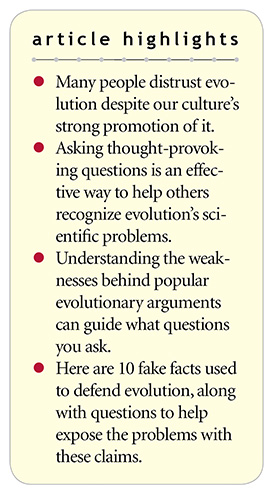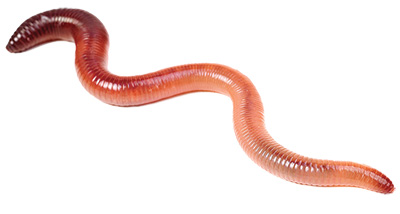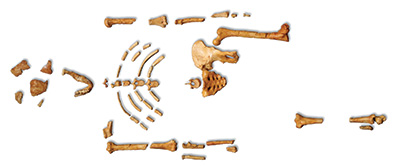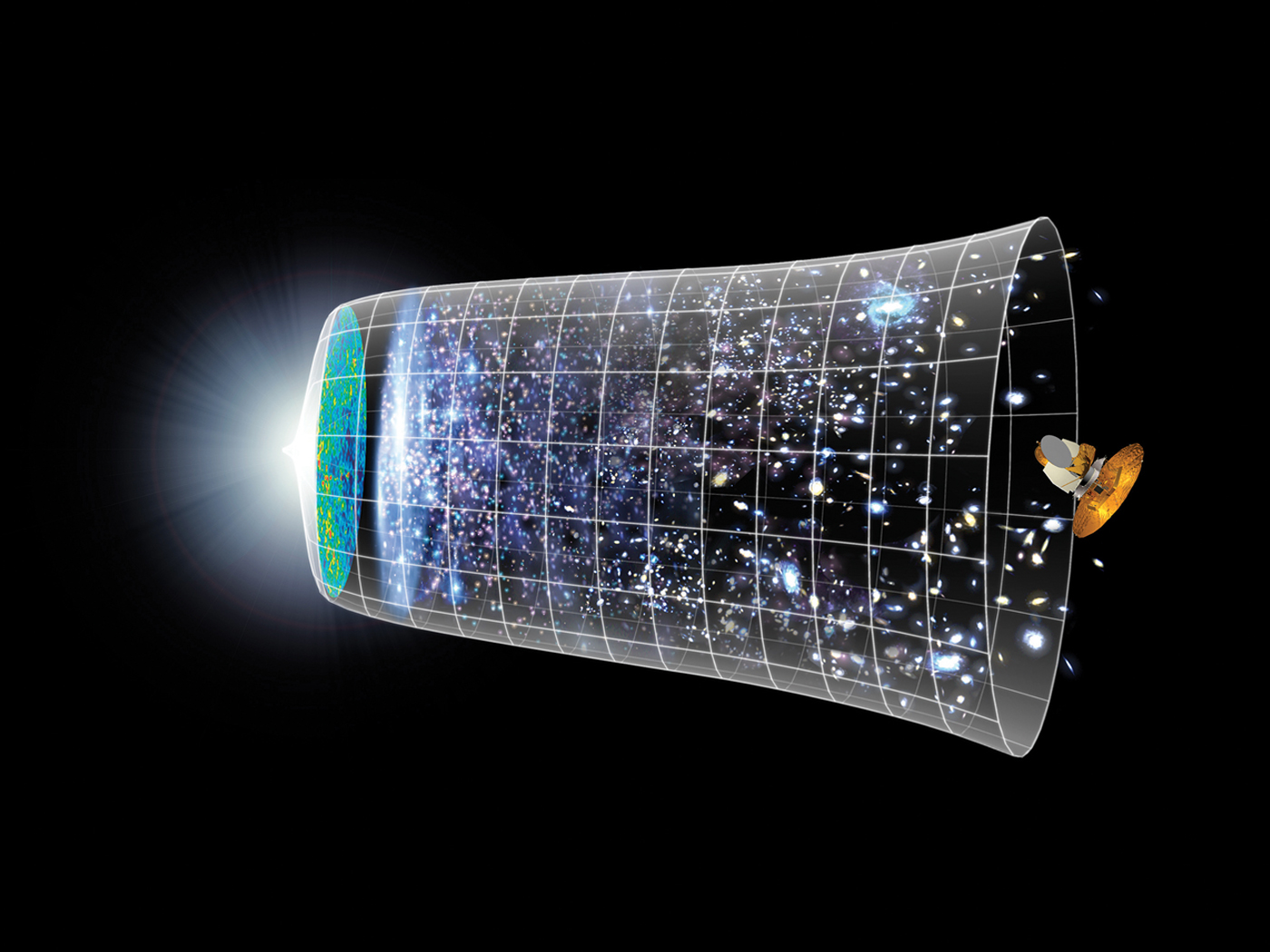 ICR founder Dr. Henry Morris wrote in 2003, “Practically all the media strongly promote evolution and...the general public has been taught only evolution in public schools and secular colleges all their lives.”1 Yet, according to yearly polls, about half of Americans still distrust at least some evolutionary ideas. Dr. Morris suggested these people may recognize the evidence that counters big-picture evolution. I’ve found that by asking thought-provoking questions about evolutionary arguments, I can help friends recognize enough weaknesses for them to think more about creation options.2
ICR founder Dr. Henry Morris wrote in 2003, “Practically all the media strongly promote evolution and...the general public has been taught only evolution in public schools and secular colleges all their lives.”1 Yet, according to yearly polls, about half of Americans still distrust at least some evolutionary ideas. Dr. Morris suggested these people may recognize the evidence that counters big-picture evolution. I’ve found that by asking thought-provoking questions about evolutionary arguments, I can help friends recognize enough weaknesses for them to think more about creation options.2
This article will review 10 false statements used to promote the belief that purely natural processes could accomplish what only a supernatural Creator can. Some suggested questions follow each section to help tactfully guide conversations about these origins issues.
1. The Universe Began with a Big Bang
Many people talk about the Big Bang as if it’s a scientific fact, but it’s really a speculation. It has never been proven. Some assume that because the universe is apparently still expanding, it must be a leftover effect from an explosive origin. But even if the universe is expanding today, it doesn’t require a Big Bang beginning. God could have created it to expand not from the size of a pear but from a much larger original size.
Even secular textbooks recognize Big Bang difficulties such as the horizon problem and the mature galaxy problem. If the Big Bang were true, the universe should not have such a stunning uniformity or “sameness” throughout its structure and temperature. The Big Bang would also mean that the galaxies farthest from Earth should look like baby galaxies. Instead, they look the same age as those near us.
Questions to consider: Which observable, measurable, and repeatable experiment demonstrates that the Big Bang actually occurred? What about the horizon problem and the mature distant galaxy problem? Where did all the material or energy that originally “banged” come from?
2. The Earth Is 4.6 Billion Years Old
Secular scientists3 insist Earth formed through natural processes 4.6 billion years ago, but much evidence confirms our planet’s youth. At its current decay rate, for example, Earth’s magnetic field would have run down before 100,000 years.4
Earth’s fossils, coal, and diamonds are supposedly millions of years old, yet they all contain short-lived radiocarbon atoms that can last no more than 100,000 years.5
Questions to consider: If Earth is billions of years old, why does it still have a magnetic field? Why is short-lived radiocarbon found in Earth’s natural resources that are supposedly millions of years old?
3. Geologists Use Good Science to Date Rocks
Nobody—not even geologists—can directly measure the age of a rock. None of us watched Earth’s rock layers form. So, when researchers measure isotopes in rocks, they have to use assumptions to convert isotope ratios into time estimates. They assume a consistent decay rate, how much of which isotope was there in the first place, and whether or not this or that isotope leaked into or out of the rock before or after it hardened.
Isotope-based “dates” for the same rock sample don’t always agree, so scientists must decide which results to keep and which to ignore. ICR’s Radioisotopes and the Age of the Earth (RATE) multi-year study found strong evidence that secular geologists use bad science to date rocks.
Questions to consider: How can we trust radioisotope dating for rocks that formed in the past if it often gives incorrect dates for rocks of known age? When isotope-based dates don’t agree, how do scientists decide which one is right?
4. Scientists Are Close to Creating Life from Non-Life
Scientists have spent at least a century trying to create biological life from chemicals, yet they haven’t made even one DNA molecule. Since a cell’s energy, information storage, and metabolic machinery all depend on one another, the first cell could not have arisen through natural processes unless all three intricate systems sprang up at once. And besides that, body cells break down when they’re not part of a living being. The universal failure of people to make life highlights God as the source of all life (Psalm 36:9).
Questions to consider: Even if scientists someday coax natural processes to make DNA, what good would that do without the proteins required to protect, package, manipulate, transcribe, translate, and repair that DNA? What are the odds of unguided processes somehow obtaining or developing these proteins?
 5. You Even Share Ancestry with Earthworms
5. You Even Share Ancestry with Earthworms
We see variation within an animal kind, such as the lions, tigers, ligers, and cheetahs included in the cat kind. Creatures within a kind might develop trait variations to adapt to changing environments, but we never see fish turn into frogs or earthworms gradually change into people. Cats make cats, frogs produce frogs, and worms beget worms.
Evolutionists cannot agree on any of the proposed transitional creatures found among the fossils. They try to map animal and human ancestries by observing similar traits between creatures. But each researcher makes a different map as each one crafts a new story of how the same traits spontaneously evolved many times in different kinds.
Questions to consider: Is there a single scientific paper that documents the transformation of one kind of organism into a completely different kind? What do the many different ancestries scientists compose for the same set of creatures suggest about the process of crafting them?
6. Changes to Bacteria and Virus DNA Show Evolution in Action
Dr. Richard Lenski’s famous E. coli breeding experiment at the University of Chicago was designed to observe evolution happening in the lab. This famous experiment should’ve given us a glimpse of evolution occurring right before our eyes. But after 50,000 generations, he still breeds E. coli.6
Mutations caused a loss of regulation that made some E. coli more efficient citrate eaters, but this loss didn’t show that mutations can rebuild germs into anything but germs. Similarly, some people claim that the flu virus’ tendency to mutate into new strains demonstrates molecules-to-man evolution. But with every new flu strain, we’re still fighting the flu.
Questions to consider: If no new functions evolve after 50,000 bacterial generations, is there any reason to think they would ever evolve? How do flu virus mutations help prove big-picture evolution? Why after all their many mutations are they still flu viruses?
7. Natural Selection Gives Creatures an Appearance of Design
Evolutionists credit natural selection through environmental pressures for the development of various creature features. For example, the properties of air supposedly helped make bird feathers air-resistant. In truth, scientists have never seen natural selection generate a new feature, much less an organ system, in a plant or animal.
Questions to consider: How does an environment re-engineer creature features? What about air could plan and engineer the aerodynamic qualities of a feather? Why doesn’t air give all creatures feathers? Since nobody has actually seen natural selection craft new designs, why not attribute creature features to an actual designer?
8. Whale Fossils Show Evolution
Museums have labeled Pakicetus as a whale ancestor since the 1980s, when only its skull was known. In spite of the 2001 discovery of a full-body Pakicetus fossil with legs rather than fins, museums continue to display this fake fact. Evolutionists teach that this walking mammal somehow evolved into a whale. Speaking of whales, some speculated that their “hip bones” were useless leftovers from when whale ancestors had legs. But further study showed these pelvic bones are vital for underwater mating.
Questions to consider: How many body features would have had to change for Pakicetus to turn into a whale? How could a transitional creature with some dog-like parts and some whale-like parts survive in the wild? Since scientists have disproved the idea of whale hip bones, why should we believe whales ever had legs at all?
9. Fossil Ape-Men Prove Human Evolution

Donald Johanson insists that his fossil discovery nicknamed “Lucy” was a human ancestor, while Tim White insists that his discovery “Ardi” and not Lucy was a human ancestor. How can we know which, if either, is right?
Museum displays showed Lucy with human feet against fossil evidence. In 2018, a baby Lucy fossil was discovered, and it had a curved, ape-like big toe. Lucy is an extinct form of ape—with no human parts. Experts have classified every supposed human ancestor fossil as an extinct ape, an extinct human, a mystery, or a fraud. At least some evolutionary experts disagree on every one as a human ancestor.
Questions to consider: Can you name a particular fossil that evolutionary experts all agree was an ape transitioning into a human? If human evolution were true, why would natural processes give uniquely human traits such as abstract thought, appreciation of beauty, and knowledge of right and wrong to humans but not to animals?
10. Humans and Chimps Share 98% Genetic Identity
The chimpanzee is supposedly our closest relative in the animal kingdom, thought to have diverged from the same ape-like ancestor humans came from. For evolution to have made these changes within the secular time allowed, chimp and human genomes would have to be at least 98% similar. But chimps have 6% more DNA than humans. Plus, side-by-side sequence comparisons show no more than 85% similarity.7 Mutations don’t write new code. The 98% similarity line is fake.
Questions to consider: Do you know the percent difference between the chimp and human genomes simply based on size? How do the more recent studies that show only 85% similarity impact this idea?
The better we understand what makes evolution’s supposed facts fake, the better equipped we become to make a real difference. ![]()
Just One Question
Evolution runs on rhetoric and not reality. ICR offers many in-depth resources that evaluate evolutionary assertions and arguments.8 Sometimes it takes just one thought-provoking question to plant a seed of doubt in someone’s belief that nature created all things. The better we understand what makes evolution’s supposed facts fake, the better equipped we become to make a real difference.
References
- Morris, H. M. 2003. Evolutionary Arrogance. Acts & Facts. 32 (2).
- Thomas, B. 2018. Communicate Creation with Mirror Questions. Acts & Facts. 47 (4): 15.
- By “secular” we mean those who refuse to consider supernatural origins regardless of evidence.
- Humphreys, D. R. 1993. The Earth’s Magnetic Field Is Young. Acts & Facts. 22 (8).
- Thomas, B. 2017. Young Radiocarbon in Old Samples. Acts & Facts. 46 (11): 9.
- Thomas, B. 2015. Evolution’s Top Example Topples. Acts & Facts. 44 (10): 16.
- Tomkins, J. P. 2018. New Chimp Genome Confirms Creationist Research. Acts & Facts. 47 (10): 16.
- ICR offers news articles, books, podcasts, DVD series, and live events to help answer some of the most challenging questions of faith and science. Go to ICR.org/10-Fake-Facts to find a list of articles related to the topics discussed in this article.
* Dr. Thomas is Science Writer at the Institute for Creation Research and earned his Ph.D. in paleobiochemistry from the University of Liverpool.





















